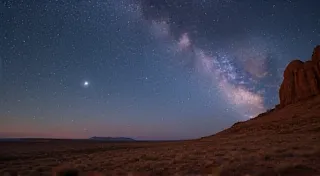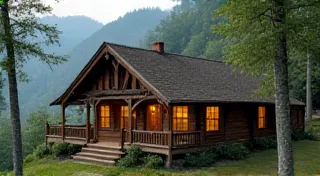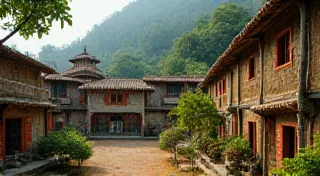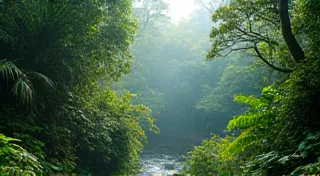Stories from Patagonia: Mythical Creatures and the Raw Beauty of the Landscape
Patagonia, a vast and windswept region shared by Argentina and Chile, is a landscape sculpted by glaciers, dominated by towering peaks, and echoing with the whispers of ancient stories. More than just a geographical location, Patagonia is a cultural crossroads, where indigenous traditions intertwine with European influences, creating a rich tapestry of folklore and oral traditions. The sheer power and beauty of the environment profoundly shapes the storytelling, imbuing tales with a sense of awe, respect, and a touch of the mystical. This region's narratives resonate with a depth found in other remote cultures, like the vibrant folktales of Madagascar, where island spirits and magical creatures also hold a central place in the cultural identity.
The Indigenous Roots: Tehuelche and Mapuche Legends
Before European settlers arrived, the land was home to various indigenous groups, most notably the Tehuelche and Mapuche peoples. Their stories were intimately connected to their survival and understanding of the world. The Tehuelche, renowned for their nomadic lifestyle and incredible endurance, possessed a rich mythology centered around animal spirits and ancestral beings. Stories often explained the origins of the landscape, the behavior of animals, and the importance of respecting the natural order. The complexity and importance of oral tradition mirrors that of other indigenous cultures; exploring the Native American storytelling traditions of the Navajo Nation reveals a similar dedication to preserving cultural knowledge through narratives.
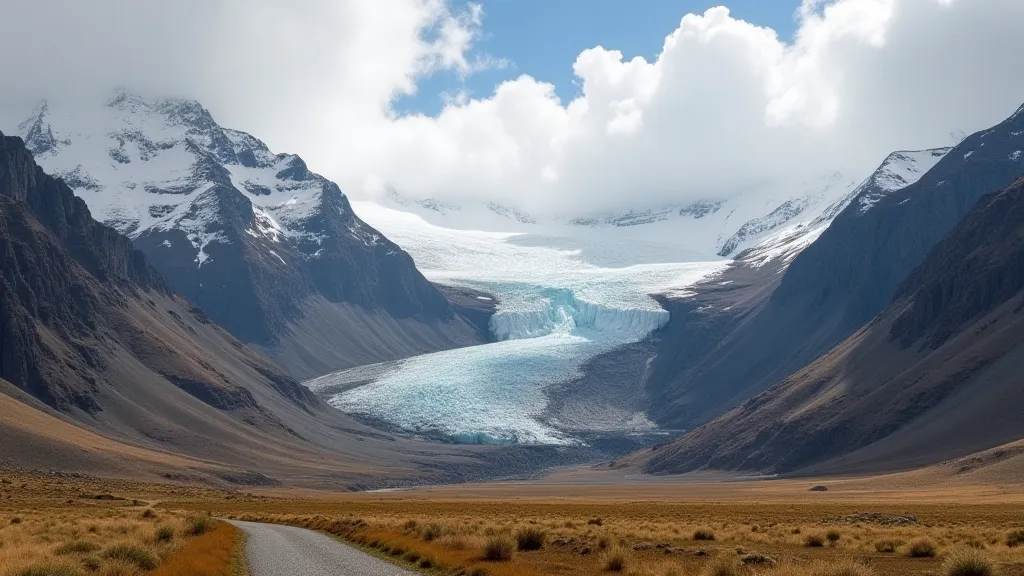
Mapuche traditions, still vibrant today, are steeped in reverence for the earth and its spirits. Their stories are populated by powerful figures like Pillán, a supernatural being associated with the mountains, and Wenumapu, a shapeshifting trickster. These tales often explore themes of balance, courage, and the consequences of disrupting the harmony between humans and nature. The power of these figures and the importance they hold in the cultural fabric evoke similar themes seen in the stories of other indigenous populations around the globe, all striving to explain their place in the world and their relationship with the natural forces surrounding them.
Mythical Creatures of Patagonia
The harsh and remote nature of Patagonia has fostered a fertile ground for mythical creatures. Many stories feature beings that embody the landscape's power and unpredictability. The "Kai Kai" are figures from Tehuelche folklore - giants with incredible strength and a connection to the mountains. Descriptions vary, but they are often depicted as benevolent protectors or fearsome guardians, depending on the respect shown to them. Their roles as protectors and shapers of the land recall the powerful entities found in the folktales of the Caribbean, where Anansi the Spider and other figures embody both trickery and wisdom.
Other notable figures include the “Wapati,” a benevolent forest spirit said to guide lost travelers, and stories of monstrous condors with the power to control the winds. These creatures aren’t simply fantastical; they serve as metaphors for the power of nature and the potential consequences of disrespecting it. The concept of animal spirits acting as guides and protectors is a recurring motif across many cultures, highlighting a universal recognition of the interconnectedness between humans and the natural world.
European Influences and Blended Traditions
With the arrival of European settlers, particularly from Spain, Patagonian storytelling began to incorporate new elements. While many indigenous narratives were carefully preserved through oral tradition, European folk tales and beliefs also found their way into the region. This blending of cultures resulted in unique stories that reflect the complex history of Patagonia. The process of cultural exchange and blending of narratives is not unique to Patagonia; it’s a historical pattern observed throughout the world, where stories adapt and transform as different cultures interact.
For example, some legends incorporate elements of European mythology alongside indigenous beliefs, creating hybrid narratives that are both familiar and strikingly original. The oral tradition has been crucial in maintaining this blend, allowing for adaptations and reinterpretations that keep the stories relevant to each new generation. This dynamic process of retelling and reshaping stories allows traditions to remain vital and accessible across generations, a practice deeply ingrained in cultures worldwide.
The Landscape as Storyteller
Perhaps the most defining characteristic of Patagonian storytelling is the profound influence of the landscape itself. The colossal glaciers, the vast steppe, the turbulent waters of the Strait of Magellan - all of these elements become characters in the stories. The sheer scale of the environment inspires awe and humility, and the harsh conditions demand respect. The rugged beauty of Patagonia’s landscape lends itself to the creation of compelling narratives, much like the sweeping plains and dramatic coastlines of Africa inspire the oral traditions of the Maasai people.
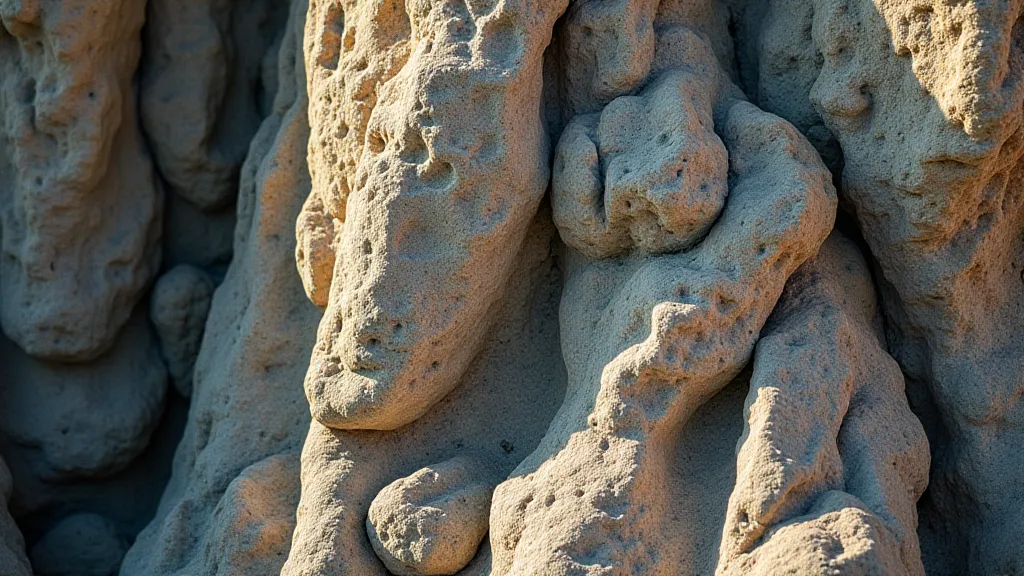
Many stories are directly tied to specific locations—a particular mountain peak, a hidden waterfall, or a secluded valley. These places become imbued with significance, acting as living reminders of the stories they hold. Visiting these locations often evokes a sense of connection to the past and an appreciation for the enduring power of oral tradition. The act of physically connecting to a landscape through storytelling enhances the narrative's power and deepens the listener's understanding of the cultural significance of the location.
A Deeper Dive into Tehuelche Mythology: The Kai Kai and Beyond
Let's delve further into the fascinating mythology of the Tehuelche people. The Kai Kai, as mentioned previously, are more than just giants; they represent the embodiment of the Patagonian wilderness. Accounts of them vary widely, shaped by the storyteller and the context of the tale. Some depict them as benevolent guardians of mountain passes, offering shelter and guidance to weary travelers. Others portray them as fierce protectors of sacred sites, punishing those who disrespect the land. It’s important to remember that these stories weren't just entertainment; they served as a moral compass, reinforcing the importance of respect and reciprocity with the environment.
Beyond the Kai Kai, Tehuelche folklore is rich with tales of animal spirits, each with their own unique personalities and roles. The Puma, often revered as a powerful and elusive predator, frequently appears in stories as a symbol of strength and cunning. The Guanaco, a relative of the llama, is often portrayed as a symbol of resilience and adaptation, reflecting the Tehuelche people's ability to thrive in a challenging environment. These animal spirits aren’t simply characters in stories; they are integral parts of the Tehuelche worldview, representing the values and principles that guided their lives.
The Mapuche Connection: Pillán, Wenumapu, and the Earth’s Spirits
The Mapuche, another vital indigenous group in Patagonia, possess a rich and complex mythology that focuses heavily on the connection between humans and the earth. Pillán, the supreme deity in Mapuche belief, is associated with the mountains and represents power and dominion. Wenumapu, on the other hand, is a trickster figure, a shapeshifter who embodies both chaos and wisdom. Through these figures, the Mapuche explore themes of balance, courage, and the consequences of disrupting the harmony between humans and nature.
The Mapuche believe that the earth itself is a living entity, imbued with spirits that must be respected and appeased. Rituals and ceremonies are often performed to honor these spirits and maintain the balance between the human and natural worlds. The concept of 'Ngen', a life force that connects all living things, underscores the interconnectedness of all beings in the Mapuche worldview.
Preserving a Living Heritage
Today, efforts are underway to preserve and revitalize Patagonian storytelling traditions. Community workshops, cultural festivals, and educational programs are helping to ensure that these stories continue to be passed down to future generations. Recognizing the cultural heritage that resides within these narratives is vital for maintaining the unique identity of Patagonia. The work of dedicated community members and cultural organizations is crucial in ensuring that these stories don't fade into obscurity.
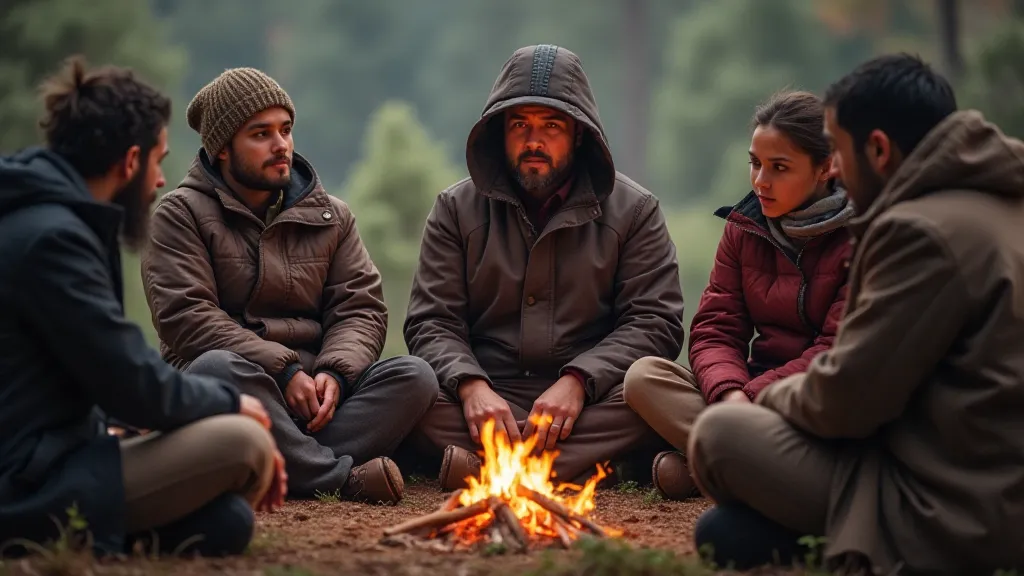
Digital platforms are also playing a growing role in preserving and sharing Patagonian stories with a wider audience. Recordings of oral traditions, interactive storytelling apps, and online archives are helping to ensure that these narratives remain accessible for generations to come. While digital preservation is important, it's vital to maintain the human connection to these stories through face-to-face storytelling events and community gatherings.
By listening to these stories, we gain a deeper understanding of the region’s history, the values of its people, and the profound connection between humans and the natural world. The tales of Patagonia are not just entertainment; they are a vital part of a living heritage, offering insights into a culture shaped by resilience, beauty, and the enduring power of storytelling. They serve as a reminder of the importance of respecting the environment and celebrating the rich tapestry of human cultures that enrich our world.

